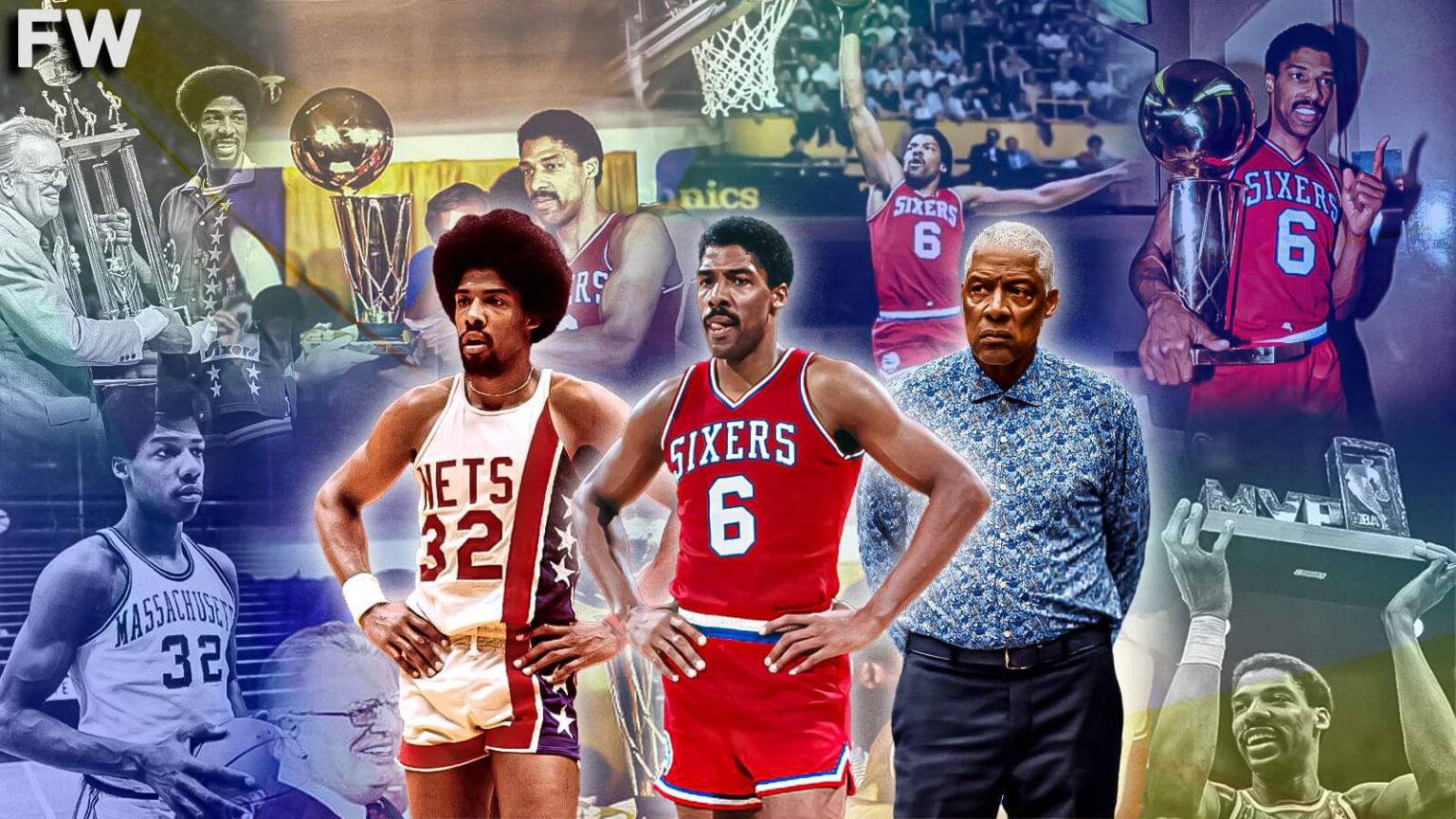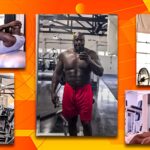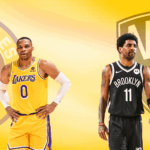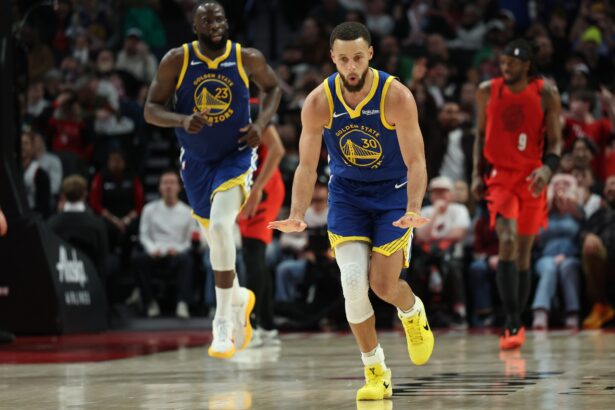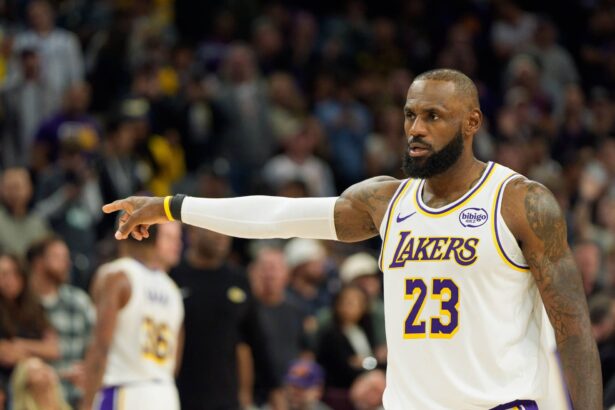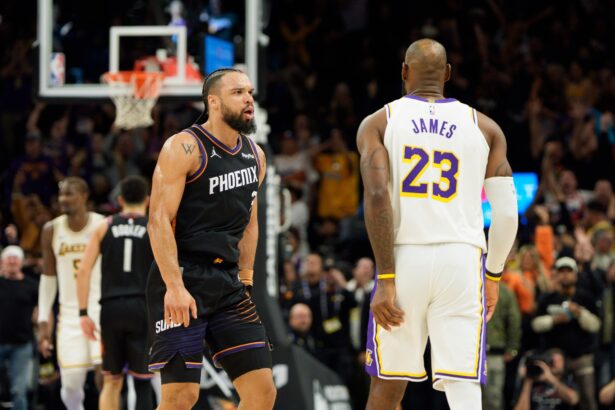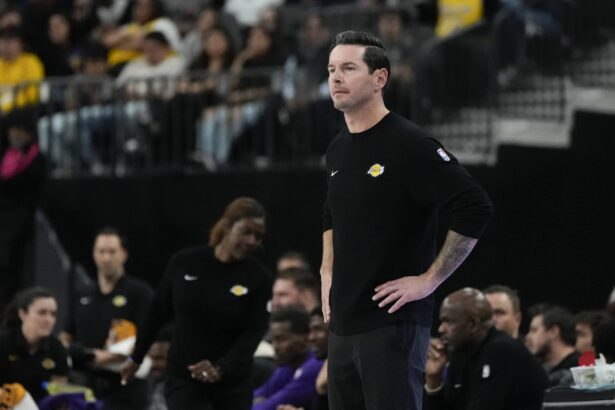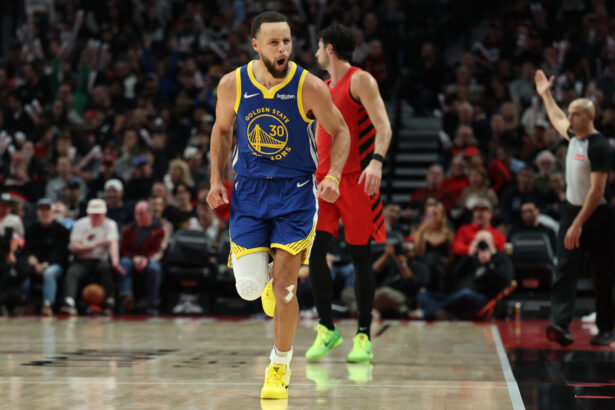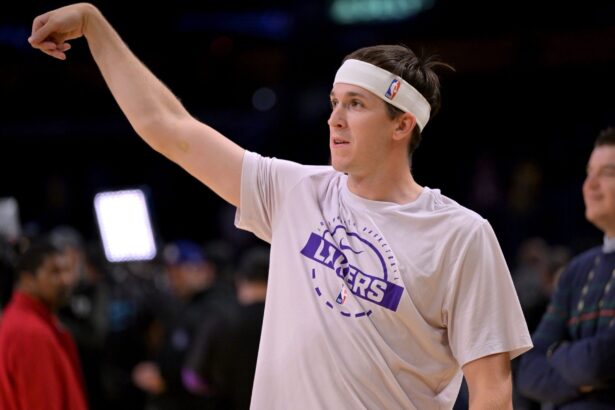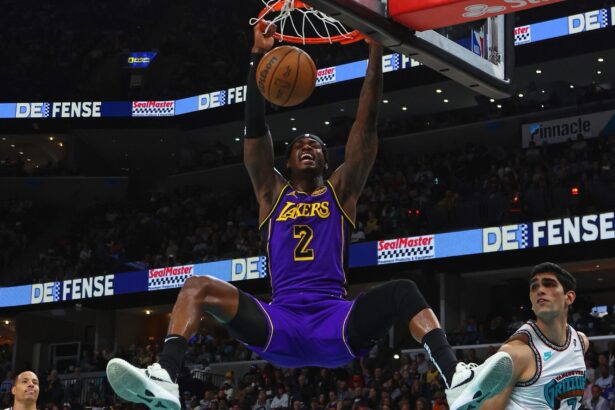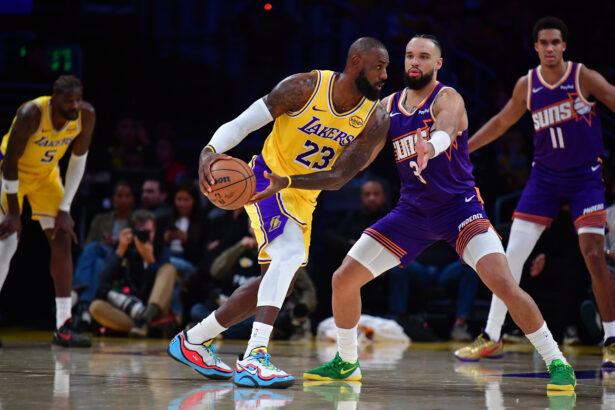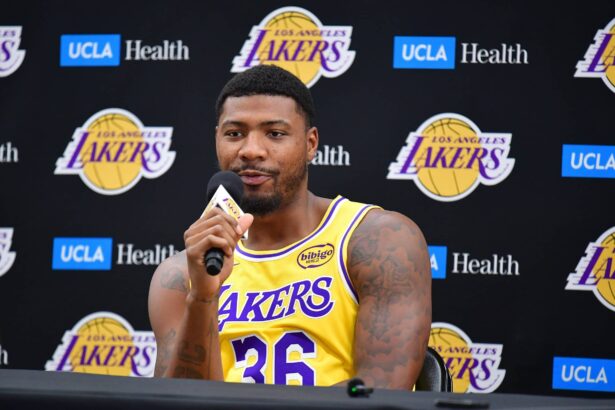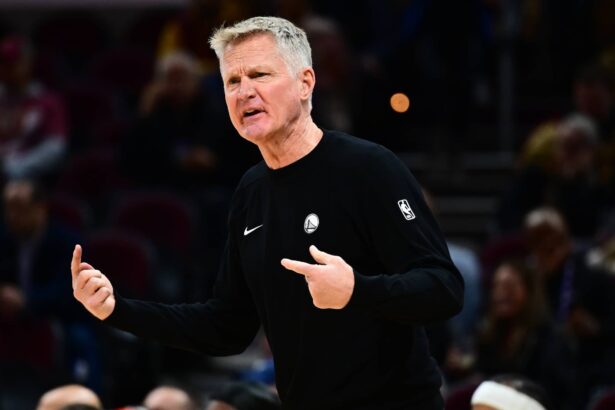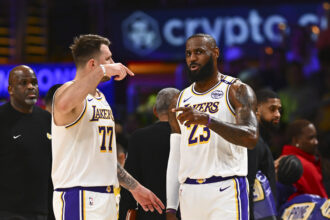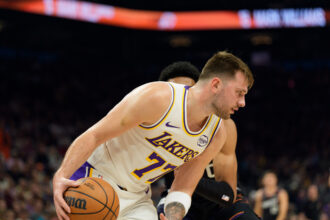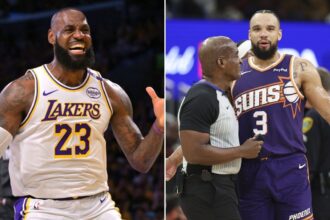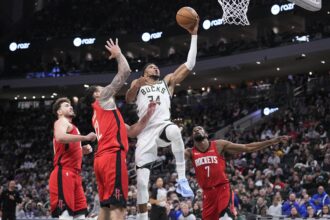Many say the first star of the NBA was George Mikan, and rightfully so. But he wasn’t the first player who truly became a household name in America.
- The Early Life Of Julius Erving
- Dr. J: The ABA Star
- The Doctor Arrives In The NBA
- The Doctor’s Post-Basketball Life And Tragedy
- Next
- Wilt Chamberlain Biography: The Life, Career, And Legend Of The Most Dominant NBA Player Ever
- Magic Johnson Biography: How The NBA’s Greatest Passer Defeated A Deadly Illness To Become A Successful Businessman
- The Biography Of The G.O.A.T.: Michael Jordan
- LeBron James: The Biography Of The NBA’s King
- Kobe Bryant Biography: The Life Of The Black Mamba
No, there was another player who became the face of the league and helped grow the NBA in popularity. This player’s name is Julius Erving, otherwise known as Dr. J.
The remarkable thing about Dr. J is that he was the face of another league at first, the ABA. If it wasn’t for “The Doctor,” the ABA may have folded a few years before it actually did.
Most people know of Dr. J’s high-flying dunks and his spectacular layups, but do you know about Julius Erving, the person? “The Doctor” has lived an entertaining life with many ups and downs, which we’ll get into here in his biography.
Without further ado, here is the biography of Julius “Dr. J” Erving.
The Early Life Of Julius Erving
On February 22, 1950, in Roosevelt, New York, Julius Winfield Erving II was born. He attended Roosevelt High School, where he was a solid player who had a fundamentally sound game.
Erving was not a high-flying player yet, but his skills set him apart from the competition. While playing high school basketball, Julius earned the nickname “Doctor” from his friend Leon Saunders. He gave Saunders the nickname “Professor.”
This nickname would eventually adapt to what we know Erving to be called today, which is Dr. J. After a solid high school career, Dr. J attended the University of Massachusetts Amherst, where he made history.
Dr. J is only one of six players in NCAA Men’s Basketball history to average at least 20 points and 20 rebounds per game. In his two-year collegiate career, Erving averaged 26.3 points and 20.2 rebounds per game, but he’d leave school early in 1971 to join the American Basketball Association, thanks to the ABA’s hardship rule that allowed college underclassmen to join the league.
Dr. J: The ABA Star
The American Basketball Association was a league founded in 1967 and was a direct competitor to the NBA. Dr. J started his professional career as a member of the Virginia Squires.
Immediately, Dr. J became a fan favorite in the ABA. His dunking prowess wowed fans, and his general ability to score the ball also impressed anyone who watched him play.
In his rookie season, Dr. J averaged 27.3 points per game, which led all rookies in scoring. Erving would finish second to Artis Gilmore for the Rookie of the Year Award but was selected to the ABA All-Rookie Team while being named to the All-ABA Second Team.
Dr. J and his Squires finished with a 45-39 record, which was second best in the Eastern Division. Erving’s team would reach the Eastern Division Finals, where they lost to Rick Barry and his New York Nets 4-3.
Despite having his team lose, Dr. J played great in the Eastern Division Finals. He averaged 30.7 points and 21.0 rebounds per game in the seven-game series.
After his first season in the ABA, the NBA deemed him eligible to be drafted, and he was 12th overall by the Milwaukee Bucks in the 1972 NBA draft. Dr. J wanted to make the jump to the NBA since the ABA wasn’t televised as much as the NBA, especially his team, the Virginia Squires.
After his rookie season with the Squires, Dr. J signed a contract with the Atlanta Hawks. This angered the Virginia Squires management, and they went to court to force Dr. J to honor his contract.
Dr. J ended up playing two exhibition games with the Hawks before being ruled by the judge that he was the property of the Squires. So, Dr. J returned to the Squires, and he’d play only one more season with Virginia, where he led the league in scoring with 31.9 points per game.
Dr. J may have played great, but his team struggled to a 42-42 record, ultimately falling 4-1 in the Eastern Division Semifinals to the Kentucky Colonels. After the season, the Squires were struggling to make money. They ended up selling his contract to the New York Nets, the team most people remember him on during his ABA days.
As a member of the New York Nets, Dr. J would explode in popularity, helping the struggling ABA stay afloat. He also became the best player in the league, and he was ready to prove he could lead a team to a championship.
Dr. J didn’t wait long, as he led his Nets to the championship in his first season in New York. Erving led the Nets to a league-best 55-29 record while leading the league in scoring at 27.4 points per game.
As a member of the Nets, Dr. J’s popularity rose to new heights. His high-flying act resonated with fans in a way no basketball player, ABA or NBA, had before.
The height of Dr. J’s ABA fame occurred during the ABA’s 1976 All-Star Game. At halftime, the league put on the first-ever Slam Dunk Contest, where Dr. J famously converted on a free throw line slam dunk.
Yes, before Michael Jordan, it was Julius Erving who soared from the free throw line, throwing down a huge slam dunk. The crowd roared in excitement, and everyone knew Erving was going to be the winner of the first Slam Dunk Contest.
Dr. J would complete three more dunks before the contest was over, and “The Doctor” was named the first-ever Slam Dunk Contest Champion. Erving was more popular than ever, and he’d lead the Nets to a second title during the 1975-76 season.
Despite this fame and success, the ABA was crumbling, and the end was in sight. Luckily for Dr. J, he’d find a new opportunity in a new league… The NBA.
The Doctor Arrives In The NBA
Julius Erving was the king of the ABA. He won two titles and three straight MVPs from 1973-75 to 1975-76 (Erving was co-MVP in the 1974-75 season with George McGinnis). After the 1975-76 season, the ABA ended, and four ABA teams were absorbed into the NBA.
The teams that made the jump to the NBA were the Denver Nuggets, Indiana Pacers, San Antonio Spurs, and Dr. J’s New York Nets. Yet, when Erving went to the NBA, he wouldn’t stay with the Nets, who moved to New Jersey.
The New York Knicks became angry at the Nets, claiming the former ABA team was “invading” their territory. This led to the Nets owing the Knicks $4.8 million, which they could not pay.
The Nets ended up offering Dr. J’s contract in exchange for not paying the fine, which the Knicks declined. On top of the Nets’ financial troubles with the Knicks, Dr. J wanted a $500,000-a-year raise, which put more pressure on the Nets.
Things got so bad that Dr. J sat out the preseason, claiming he wouldn’t play unless he got his raise or was traded. Two days before the start of the season, the Nets sent Dr. J to the Philadelphia 76ers for $2.5 million in cash. The Sixers then gave “The Doctor” a six-year, $3.5 million contract.
Julius Erving had his new contract, and he was ready to play in the NBA. From the start, Dr. J found success in the NBA. He joined a 76ers squad that had some real talent on it, like George McGinnis and Darryl Dawkins.
The 76ers finished the 1976-77 season with a 50-32 record, which was the best in the Eastern Conference. Dr. J averaged 21.6 points, 8.5 rebounds, and 3.7 assists per game in his debut NBA season.
The 76ers stormed through the playoffs, reaching the NBA Finals, where they’d be matched up against Bill Walton’s Portland Trail Blazers.
The opening tip of Game 1 saw Erving take the ball and immediately slam dunk the ball. Philadelphia won Game 1 and Game 2 in the series. Even though the 76ers won Game 2, an incident at the end of the game turned the momentum in the Trail Blazers’ favor.
Darryl Dawkins of the 76ers got into a fight with Bob Gross of the Trail Blazers. This led to a major brawl. Portland rallied to win the next four games and the series.
In the Finals loss, Dr. J averaged 30.3 points, 6.8 rebounds, 5.0 assists, and 2.7 steals per game. Dr. J wouldn’t have to wait too long to get another chance as he led his 76ers back to the NBA Finals in the 1979-80 season.
This time around, Dr. J ran into the Los Angeles Lakers and a rookie sensation named Earvin Magic Johnson. This was the series where Magic started Game 6 at center for the injured Kareem Abdul-Jabbar.
The 76ers lost 4-2 despite Dr. J averaging 25.5 points, 7.0 rebounds, 5.0 assists, 2.0 steals, and 2.3 blocks per game. Even in the loss, “The Doctor” made fans jump out of their seats with his iconic scoop reverse layup in Game 4.
The 1979-80 season was Dr. J’s fourth year in the NBA. Questions were now popping up asking if Julius Erving would ever win an NBA title.
Many fans believed Dr. J was a great ABA champion that became just another good player in the NBA. Dr. J and his 76ers would get a rematch of their 1980 Finals against the Lakers in just two seasons.
After a 58-24 record in the 1981-82 season, Dr. J’s 76ers stormed back to face the Lakers. This series went eerily similar to the 1980 Finals… The Lakers won the series in six games.
This time, Erving averaged 25.0 points, 8.2 rebounds, 3.3 assists, and 1.8 steals per game. Dr. J and the 76ers needed more help. Erving was 31 years old after the season, and they seemed to be one player away from winning a title.
After the season, the 76ers got that one missing piece. They signed Moses Malone in a sign-and-trade with the Houston Rockets for Caldwell Jones.
The team looked poised to get back to the Finals to give “The Doctor” one last chance at an NBA championship. They finished the year with the best record at 65-17.
Dr. J averaged 21.4 points, 6.8 rebounds, and 3.7 assists per game during the 1982-83 season, but he took a back seat to Moses Malone, who not only won the MVP the season prior with Houston, but he also won this season’s MVP. The 76ers entered the playoffs as the team to beat.
In a rematch against the Los Angeles Lakers on January 5, 1983, the 76ers outlasted the Lakers in a 122-120 overtime victory. What was most notable about the game was Dr. J’s cradle dunk, which may be the greatest dunk of all time.
This would not be the last time Philadelphia would see Los Angeles that season. The 76ers made their way back to the NBA Finals for yet another showdown with the Lakers. This time, things would go differently.
The 76ers swept the Lakers 4-0 as Malone was named MVP. Dr. J didn’t earn the MVP, but he had a solid series with averages of 19.0 points, 8.5 rebounds, 5.0 assists, and 2.8 blocks per game.
Julius Erving was now an NBA champion. His resume as a basketball legend was now complete. “The Doctor” would play four more seasons before retiring after the 1986-87 season.
Dr. J finished with career averages of 22.0 points, 6.7 rebounds, 3.9 assists, 1.8 steals, and 1.5 blocks per game in his NBA career. He averaged 28.7 points, 12.1 rebounds, 4.8 assists, 2.4 steals, and 2.0 blocks per game in his ABA career.
The Doctor’s Post-Basketball Life And Tragedy
After retiring from the NBA, Julius Erving first earned a bachelor’s degree in creative leadership and administration. This was a promise he made to his mother after he left school early to play in the ABA.
Dr. J has worked in television after retiring from working as a television analyst for basketball games on NBC, as well as appearances on shows such as The Office and Hangin’ with Mr. Cooper.
“The Doctor” has also appeared in a few movies, such as the 1993 drama Philadelphia and the 2022 hit Adam Sandler movie, Hustle. Movies and television aren’t all Dr. J has been up to since retiring from basketball as a player.
Erving also became the Vice President of RDV Sports and Executive Vice President of the Orlando Magic in 1997. He resigned from the position in 2003.
Dr. J has also became a successful businessman in his post-playing career. He became the owner of a Coca-Cola bottling plant in Philadelphia as well as cable television stations in New York and New Jersey.
Unfortunately for Julius Erving, not everything has been great since retiring from basketball. On May 28, 2000, Julius’ 19-year-old son, Cory Erving, went missing. After 39 days of searching for him, Cory’s car was found in a swamp near the family’s Florida home.
Cory was pronounced dead from an accidental drowning from the accident.
“We have learned a lot from this tragedy, and we will be a stronger family as a result. The Erving family will go forward from here. We have no other choice,” Erving said in a statement about Cory’s passing.
A tragedy involving someone’s child is never easy to overcome. But Julius Erving has remained strong for his seven other children. This includes tennis star Alexandra Stevenson, who Dr. J had from an affair in 1980.
Dr. J didn’t meet Alexandra Stevenson until 2008, but he was supporting her financially her entire life. Like everyone, Julius Erving is not perfect. He’s human and made mistakes, ones he’s making up for.
As a basketball player, he was nearly perfect. You can’t mention the game of basketball without bringing up “The Doctor’s” name.
“As a basketball player, Julius was the first to truly take the torch and become the spokesman for the NBA,” said Billy Cunningham, his former coach. “He understood what his role was and how important it was for him to conduct himself as a representative of the league. Julius was the first player I ever remember who transcended sports and was known by one name — Doctor.”
Yes, Julius Erving, also known as Dr. J or simply “The Doctor,” is a basketball legend. This goes for both the NBA and ABA. As fans, we should never forget what he meant to the game.
Without Julius Erving, the game of basketball may have never seen players soar through the air with such grace and style. Here at Fadeaway World, we honor and respect the great Julius Erving.
We sincerely appreciate and respect you as a reader of our site. It would help us a lot if you follow us on Google News because of the latest update.
Thanks for following us. We really appreciate your support.

